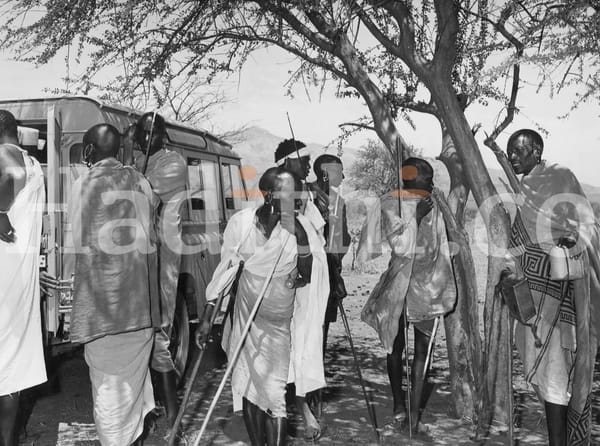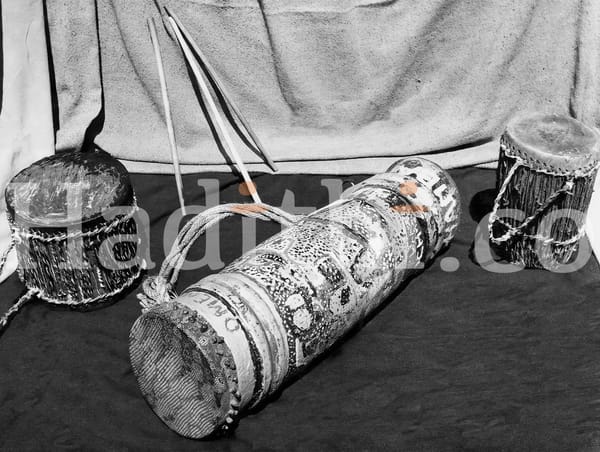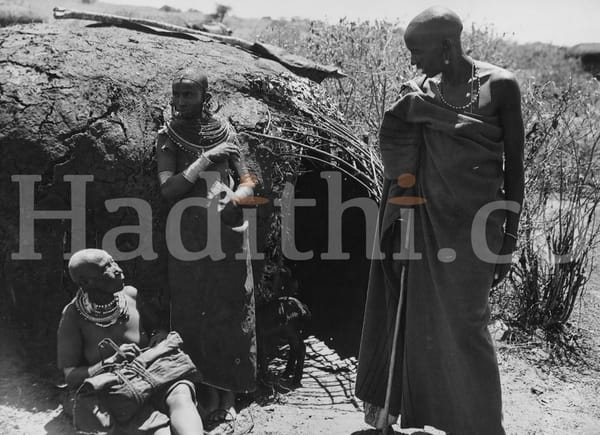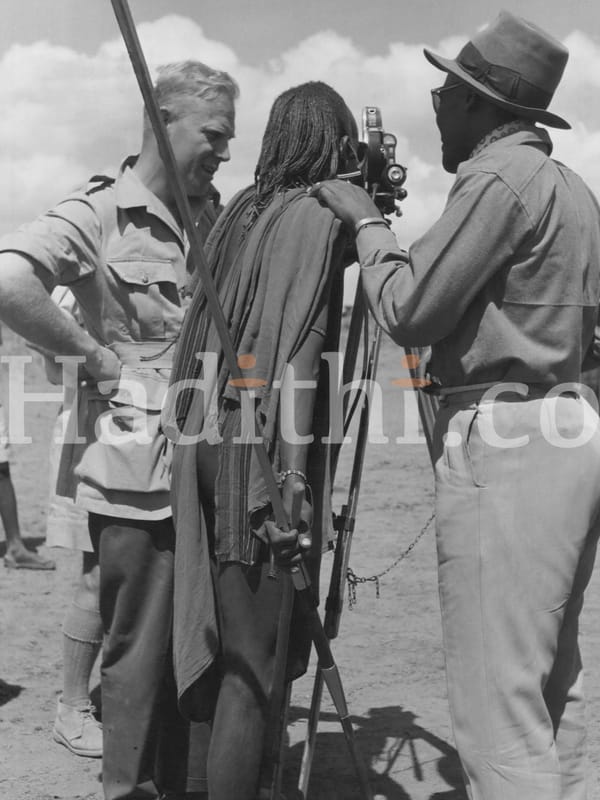Echoes of Horror: The Rwanda genocide
The Rwandan genocide which occurred for over a 100-day period in 1994 still stands out as one of the most tragic and brutal episodes of ethnic violence in modern history.

The Rwandan genocide which occurred for over a 100-day period in 1994 still stands out as one of the most tragic and brutal episodes of ethnic violence in modern history. This research paper delves into the root causes, progression, and aftermath of the genocide which was the cause of the death of an estimated 800,000 Tutsis and Hutus. This study aims to provide a comprehensive analysis of the factors that precipitated the violence by examining historical tensions, colonial legacies and the role of political propaganda. Through a multidisciplinary approach, political perspectives, and incorporating historical perspectives this research highlights the critical lessons learned from the Rwandan genocide and underscores the ongoing necessity for vigilance in the prevention of such mass atrocities.
Introduction
Overview
This part contains the background information of the research, the problem statement, research objectives, research information, and the significance of the study.
Background information
In the early 1990s, Rwanda, a small country with an overwhelmingly agricultural economy had one of the highest population densities in Africa. Approximately 85% of its population was Hutu while the rest were Tutsi along with a small number of Twa. From 1897 to 1918, Rwanda became a Belgian trusteeship under a League of Nations mandate after WW1 along with its neighboring country Burundi. Rwanda’s colonial period when the Belgians favored the minority Tutsis over the Hutus exacerbated the tendency of the few to oppress the many creating tension that later exploded into violence before Rwanda gained its independence. A Hutu revolution in 1959 forced as many as 33,000 Tutsis to flee the country thus making them a smaller minority. By 1961, the victorious Hutus had forced the Tutsi monarch into exile and declared the country a republic. After a United Nations referendum later in 1961, Belgium granted independence to Rwanda in July 1962. Ethnically motivated violence continued in the years following independence and in 1973, a military group installed Major General Juvenal Habyarimana, in power. He later founded a new political party called National Revolutionary Movement for Development(NRMD). He was elected president under a new constitution in 1978 and re-elected in 1983 and 1988 where he was the sole candidate. In 1990, forces of the Rwandese Patriotic Front consisting mainly of Tutsi refugees invaded Rwanda from Uganda. Habyarimana accused the Tutsi of being RPF accomplices and arrested hundreds of them. Between 1990 and 1993, there were massacres where hundreds of Tutsi were killed. A ceasefire in the massacre led to negotiations between the government and RPF in 1992 resulting in the Arusha Peace Accords. In August 1993, Habyarimana signed an agreement at Arusha calling for the creation of a transition government that would include the RPF. This power-sharing agreement angered Hutu extremists who would soon take swift and horrible actions to prevent it. April 6, 1994, a plane carrying Habyarimana and Burundi’s president Cyprien Ntanyamira was shot down over the capital of Kigali, leaving no survivors. Within the hour of the plane crash, the presidential guard with members of the Rwandan armed forces and Hutu militia groups set up roadblocks and began slaughtering Tutsis with impunity. Among the first victims of the genocide was Prime Minister Agathe Uwingilinyimana killed on April 7, 1994. 10 Belgian peacekeepers were also among the first victims of the genocide. This provoked the withdrawal of Belgian troops and the United Nations directed that peacekeepers only defend themselves afterwards. The mass killings quickly spread to the rest of Rwanda and in the first two weeks, local administrators in Central and Southern Rwanda where most Tutsi lived resisted the genocide. Government-sponsored radio stations started calling on Rwandan civilians to murder their neighbours and within three months 800,000 people had been slaughtered. Meanwhile, the RPF resumed fighting and civil war raged alongside the genocide. By early July RPF forces had gained control over most parts of the country. In response, more than 2 million people fled and crowded in refugee camps in Congo and other neighbouring countries. After its victory, RPF established a coalition government similar to that agreed upon at Arusha with Pasteur Bizimungu, a Hutu as president and Paul Kagame, a Tutsi as vice president. Habyarimana’s political party NRMD which had played a huge role in organising the genocide was outlawed. The new constitution was followed by Kagame's election to a 10-year term as Rwanda’s president and the country’s first-ever legislative elections.
The Problem Statement
The primary research problem investigates the root cause of the Rwandan genocide focusing on how historical, political, and social factors contributed to the escalation of ethnic violence. This study aims to dissect the interplay between economic disparities, colonial legacies, and political maneuvering that led to the extermination of an estimated 800,000 Tutsi and moderate Hutu. It also focuses on the impact of Rwanda’s colonial history on the shaping of ethnic identities and the tensions that led to the genocide. It investigated how the policies and practices of colonial powers entrenched ethnic divisions and contributed to the environment of mistrust. Exploration of these physical factors sheds light on the long-term effects of colonialism on Rwandan society. This study also examines the role of political propaganda and media in inciting and perpetuating the violence during the Rwandan genocide. It investigates how hate speech, misinformation, and media manipulation were used to mobilize and incite mass participation in the genocide. Measures that have been most effective in promoting reconciliation and justice in Rwanda are also addressed. This study explores the initiative Ms undertaken by the Rwandan government, international bodies, and locals to heal societal wounds. Long-term physiological and societal impacts of the Rwandan genocide on survivors are also researched. The study aims to understand mental health issues and community relationships that have been affected by the genocide trauma. Lastly, the research focuses on extracting lessons from the Rwandan genocide to improve early warning systems for the prevention of future genocides. Gaps and failures in early detection and response to the genocide proposing strategies to enhance global efforts in genocide prevention. By learning from past mistakes, this research aims to contribute to more effective mechanisms for safeguarding vulnerable populations.
Research Objectives
1. To find out the cause of the Rwandan genocide
2. To find out the impact of colonial legacies
3. To weigh the influence of media and role of political propaganda
4. To examine the initiatives undertaken for reconciliation and justice in Rwanda post genocide
5. To study the long term physiological effects of the genocide on survivors.
6. To extract lessons from the Rwandan genocide that can inform future genocide prevention strategies.
Research Questions
1. What was the cause of the Rwandan genocide?
2. What was the impact of colonial legacies?
3. What is the role of political propaganda and how much media influences actions?
4. What were the initiatives undertaken for reconciliation and justice in Rwanda post-genocide?
5. What were the long-term physiological effects of the genocide on survivors?
6. What lessons can we draw to inform and enhance future strategies for preventing genocide??
Significance of the study
· The study provides a detailed examination of the factors leading to the Rwandan genocide thus a deeper historical understanding of one of the most strategic events of the 20th century.
· Insights gained from this study can inform international policies and strategies aimed at preventing future genocides.
· Understanding the long-term physiological and social impacts on genocide survivors thus leading to better mental health support.
· Serving as an educational resource, raising awareness on the Rwandan genocide and the importance of addressing early signs of ethnic violence.
· By examining the roles and responsibilities of different actors during the genocide, the research emphasises the ethical obligations of government, international organisations, and individuals to prevent and respond to such crises.
LITERATURE REVIEW
Overview
This part entails detailed literature on the Rwandan genocide and further enunciates its impact on the country.
Historical Context and Root Cause
The Rwandan genocide which erupted in April 1994 has been extensively studied to understand its complex origins and devastating impact. Historical analysis such as that by M. Mamdani(2001) highlights the deep-rooted ethnic tensions between the Hutu and Tutsi. Mamdani highlights that the Hutu were murdered as individuals butchered for their beliefs while the Tutsi were murdered because they were Tutsi. He pointed out that the genocidal impulse may be as old as an organised power. Another historical analysis by Prunier(1995) further explains that these colonial legacies combined with socio-political instability set the stage for conflict.
Political Propaganda and Media Influence
The role of political propaganda and media manipulation in inciting the genocide was a critical area of focus. Some Rwandan media organizations urged individuals to take part in the killings while international media often gave scant coverage of the events. While addressing the symposium on the media and the Rwanda genocide in 2004, former Secretary General of the United Nations Kofi Annan said Western news media for the most part turned away and then muddled the story when they did pay attention. A 2014 paper published in the Quarterly Journal of Economics, “Propaganda and conflict: Evidence from the Rwandan Genocide” looks at the impact of Radio Tèlèvision Libre des Mille Collines, a key media outlet for the Hutu-led government on violence and killings of the Tutsi minority.
International Responsibility and Response
The international community’s response to the Rwandan genocide has been widely criticized for its inadequacy and delay. Information from many sources including informants and journalists showed illicit arms flowing, training and preparations by the Interahamwe(a Hutu extremist militia group), insider plotting for the ‘apocalypse’, and a long-standing pattern of ethnically based human rights violations. Unfortunately, the UN mission felt deaf and blind in the field as it lacked the analytical capacity to synthesize this important piece of evidence. Lack of political will may have also contributed to the genocide. The main reason for thus broad lack of resolve was that the dominant member of the UN- the USA was viewing UN peacekeeping with fear of overinvolvement
Physiological and Social Impact on Survivors
The long-term and social impacts on survivors are crucial in understanding the full extent of the genocide devastation. Academic research done by scholars such as Staub(2011) provides insights into the mental health challenges faced by survivors including PTSD and widespread trauma. Staub discusses community-based healing and reconciliation efforts aimed at physiological healing.
METHODOLOGY
· Archival research – Historical documents, official records, photographs and other archival materials related to the Rwandan genocide were examined.
· Oral history- personal testimonies and oral accounts from survivors and witnesses were collected and analysed.
· Preservation of natural stories- Information that may have not been contained in written sources was collected through word of mouth
· Interviews- Structured and semi structured interviews were conducted among survivors, scholars and experts on Rwanda culture
· Statistical analysis- statistical tools were used to analyse quantitative data such as mortality rates, demographic changes and economic impact.
INTERPRETATION AND ANALYSIS OF DATA
The qualitative data gathered from focus groups with survivors and witnesses reveal the profound physiological and social impacts of the Rwandan genocide. Many survivors recount experiences of fear, trauma, and loss with vivid descriptions of the witnessed brutality.
Field observations and in-depth case studies of specific villages provide additional insights into the social dynamic in post-genocide Rwanda. Ethnographic data shows that ethnic tensions exist in many areas with varying levels of success in reconciliation efforts. Communities where local leaders actively promote dialogue and cooperation there are notable strides towards peace and unity. Regions lack leadership, divisions remain stacked.
A thorough review of national and international policies implemented post-genocide such as the establishment of Gacaca courts and the International criminal tribute of Rwanda shows mixed outcomes. While Gacaca courts facilitated community-based justice and reconciliation, their informal nature sometimes led to inconsistencies and challenges in ensuring fairness. The international criminal tribute of Rwanda on the other hand played a crucial role in persecuting key perpetrators but were faced with criticism for its slow pace and high costs.
The findings highlight the multifaceted nature of the genocide, emphasizing the critical need for mental health support, targeted reconciliation efforts, and robust preventive measures. By drawing lessons from this tragic event, the research contributes to the broader field of genocide studies and offers practical recommendations for fostering peace in the community.
|
Application |
Implications |
Findings |
|
Power
dynamics and systemic issues |
Address structural
inequalities and power dynamics to prevent future violence. |
80% of survivors
attribute violence to systemic inequalities. |
|
Manipulation
of social identities |
Promote social
cohesion and identity reconstruction to prevent future conflicts. |
75% of the interviewees
felt ethnic identities were manipulated. |
|
Victims
mental health |
Critical need for
mental health support and community based reconciliation efforts. |
90% of the survivors
had intense fear and trauma. |
DISCUSSION
The Rwandan genocide represents one of the most tragic and complex episodes of mass violence in modern history, characterised by the rapid and systematic extermination of an estimated 800,000 Tutsi and moderate Hutu. This research integrates a variety of methodological approaches to provide a holistic understanding of the genocides origin, execution and aftermath. The qualitative data including interviews and focus groups offers profound insights into the personal experiences and trauma for survivors, emphasising critical need for mental health support and community based reconciliation efforts. Ethnographic studies and case analysis reveal the diverse responses and recovery processes in different communities, highlighting importance of context specific interventions. Quantitative data further illuminates the widespread physiological impact and the powerful role of government propaganda in inciting violence demonstrating the need of media to disseminate hate speech. Theoretical perspectives including critical theory and social constructivism deepen the analysis by exploring structural and ideological factors that enabled the genocide.
CONCLUSION
While the above selected insights into the home-grown initiatives inform about the strides achieved in the country, it would suffice to say that its communities have utilised the communities culturally based practices in the spirit of reconciliation as a collectivist society. The community values reinforcement to a large extent accounts for the current process of healing, unity and peace resolution within the communities. However, there is a long term social development ahead of social work. Social workers have been intervening directly or indirectly in perspective of healing, rebuilding relationships and resilience among citizens. However, the key challenges remain in the hidden trauma especially among the perpetrators of the genocide against the Tutsi and survivors of the genocide against the Tutsi that seem to be seeking compensation for injuries incurred. Indeed, there is a clarion role of social work for open engagement and a reflective and critical engagement at the grassroots level.
REFERENCES
1. Prunier,Gèrard,The Rwanda crisis:History of a genocide, 1995
2. Des Forges,Alison :Leave none to tell the story:genocide in Rwanda 1999
3. Lemarchand, Rwanda and Burundi, 1970
4. “State, civil society and genocide in Rwanda” in Richard Joseph Ed state conflict and democracy 1999
5. Newbury, Catharine. The Cohesion of oppression: Client ship and Ethnicity in Rwanda, 1988
6. Newbury, David and M, Catherine Newbury: Rethinking Rwandan historiography: Bringing back the peasants in, June 2000




